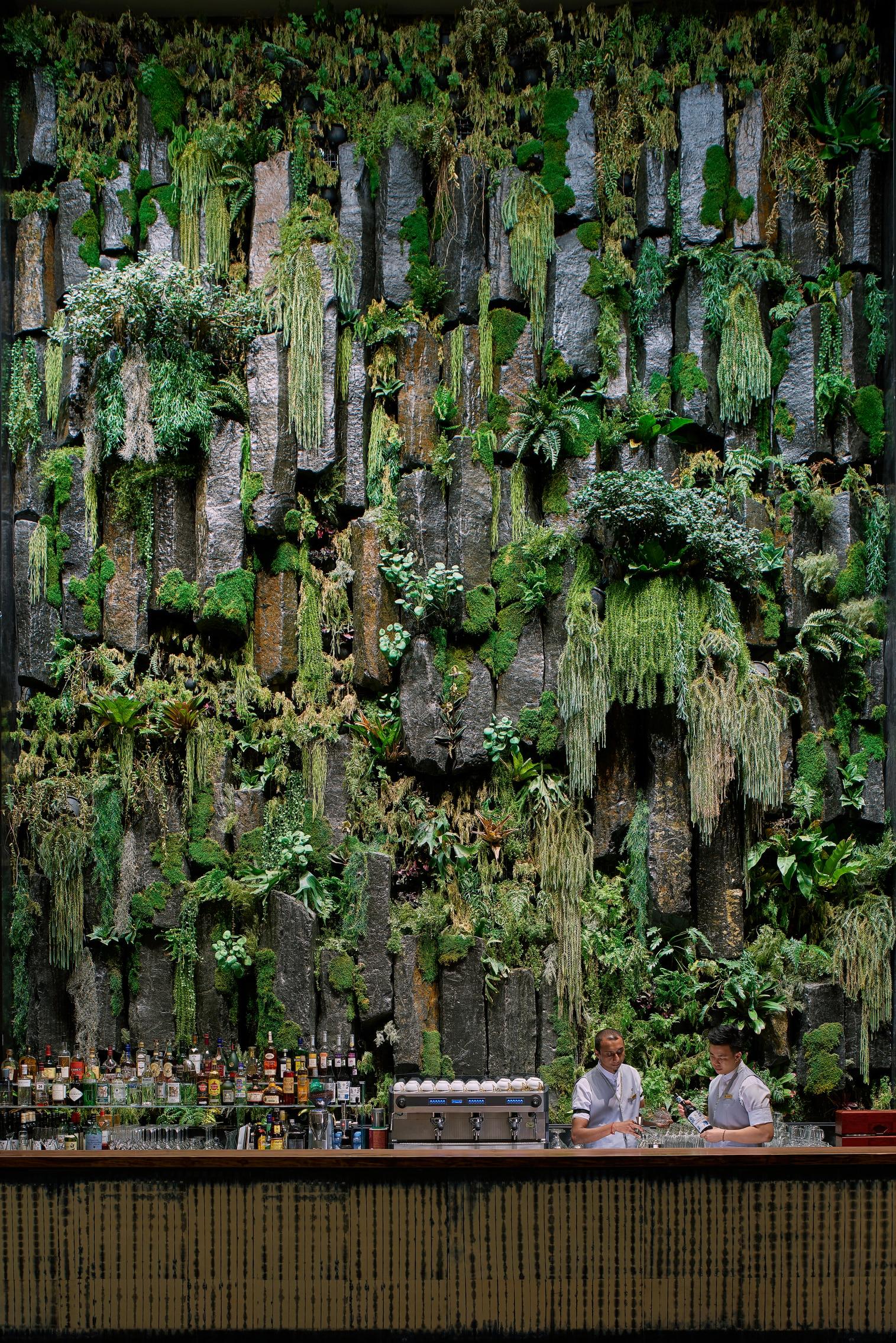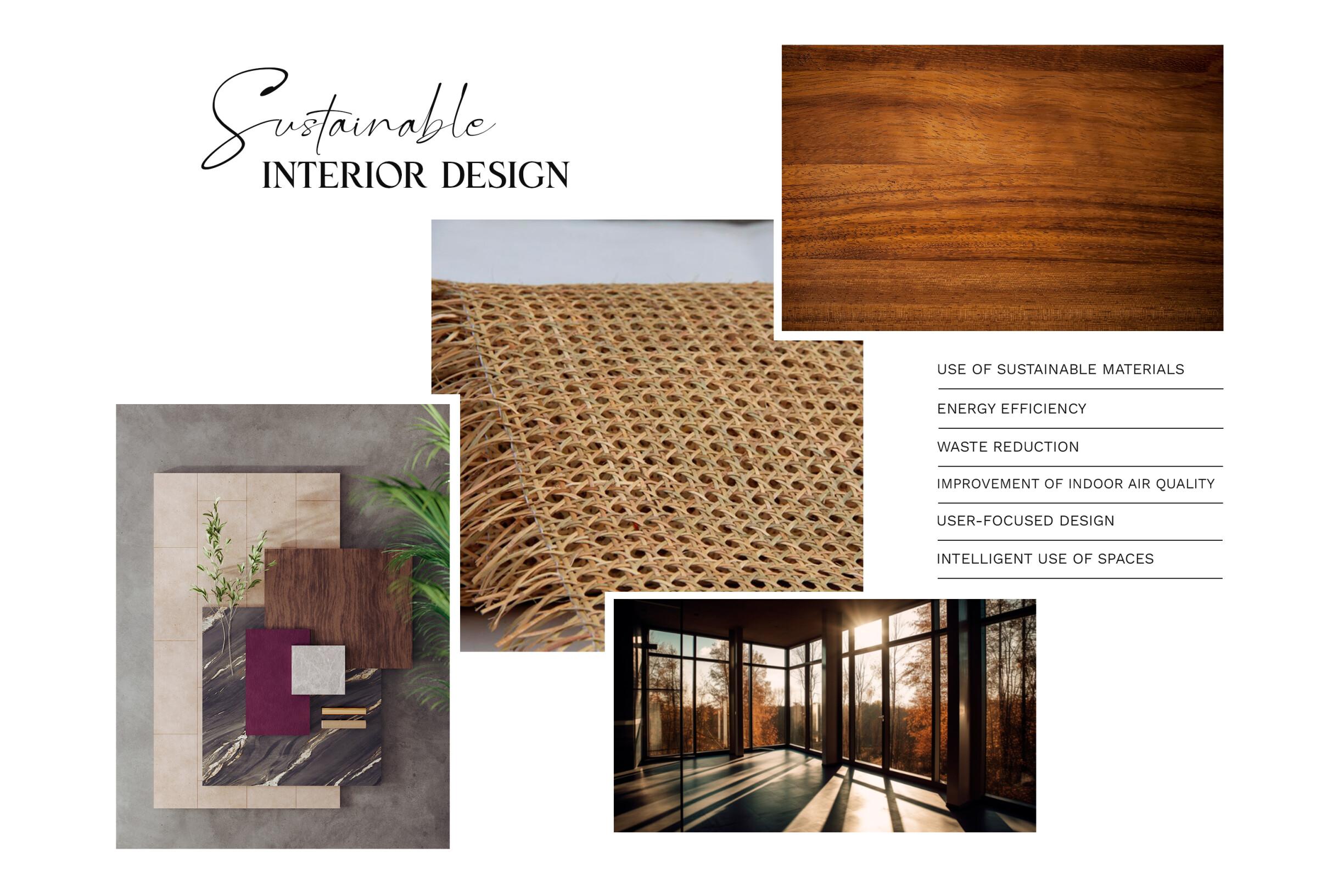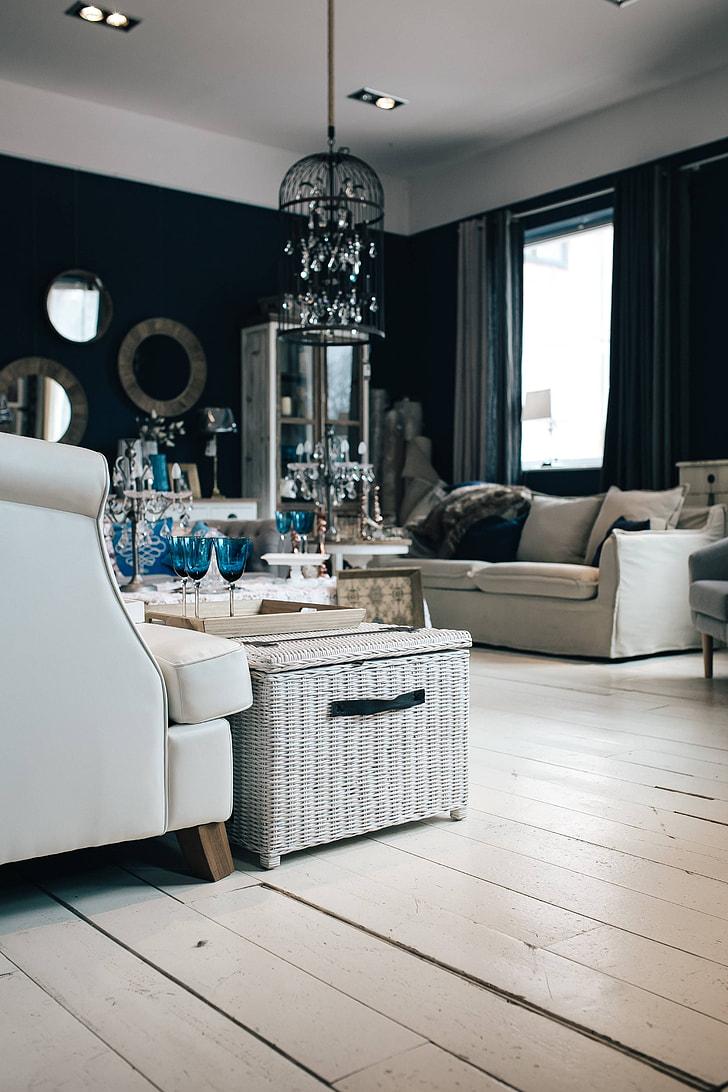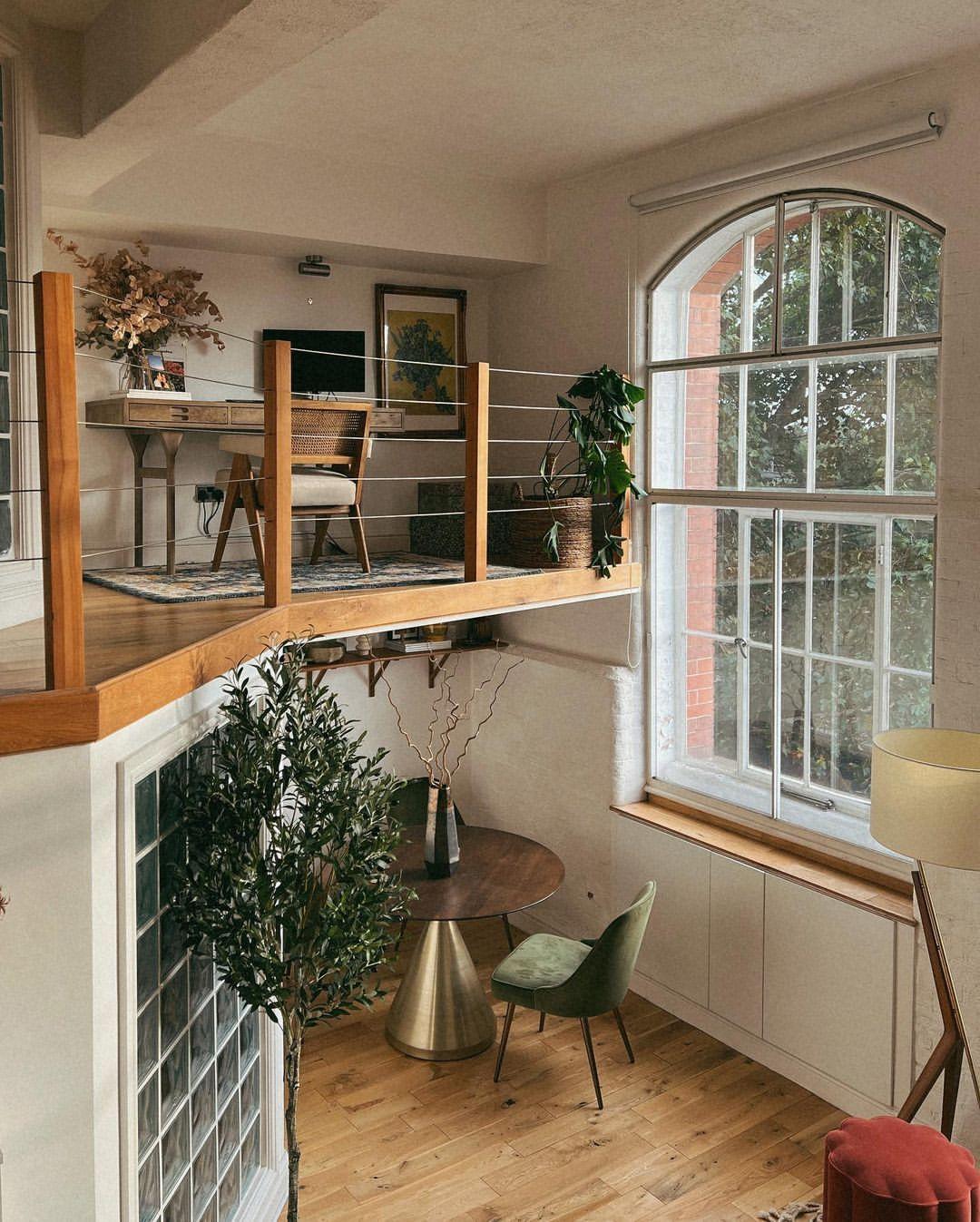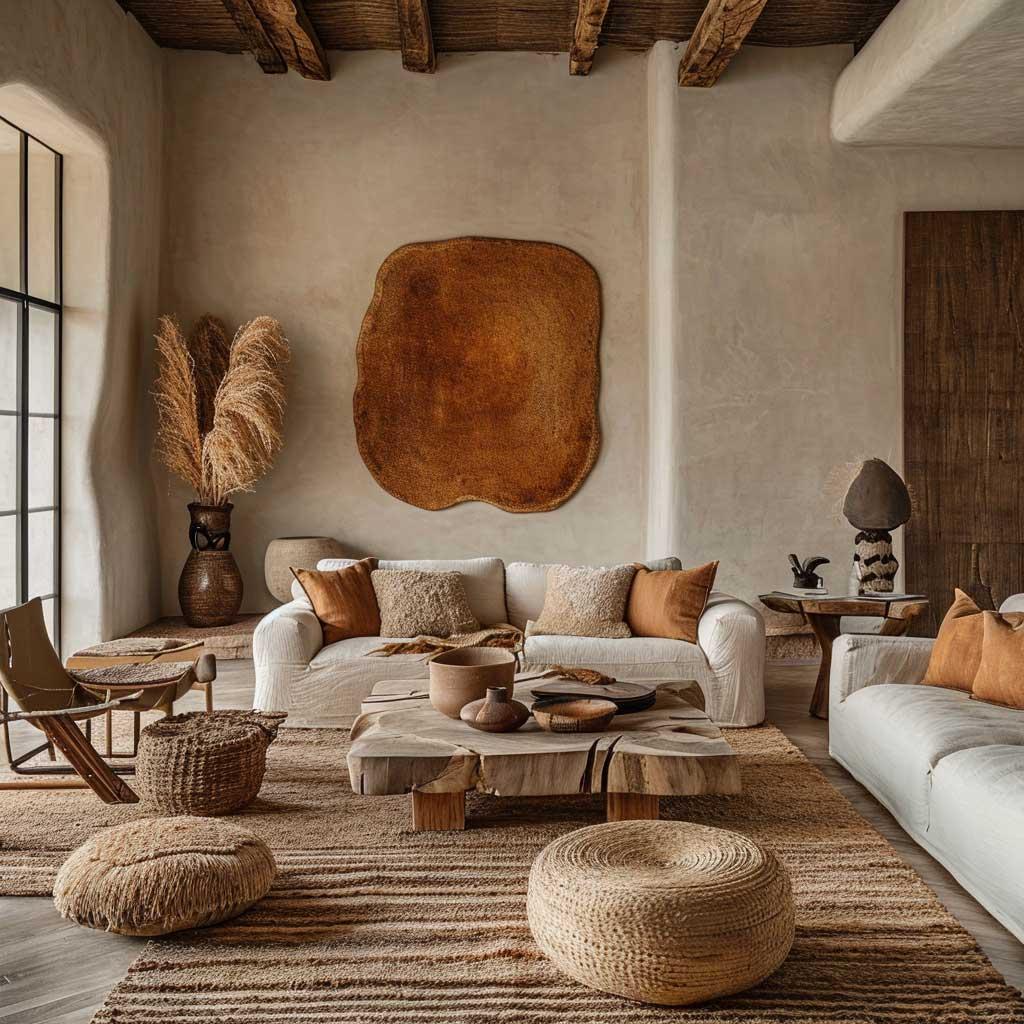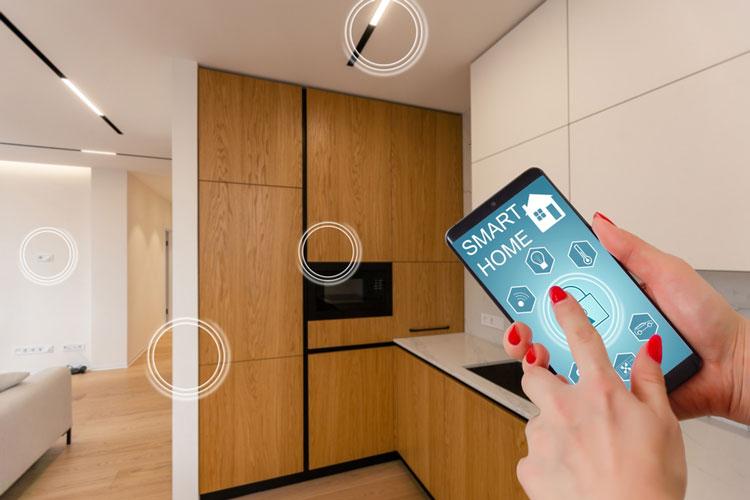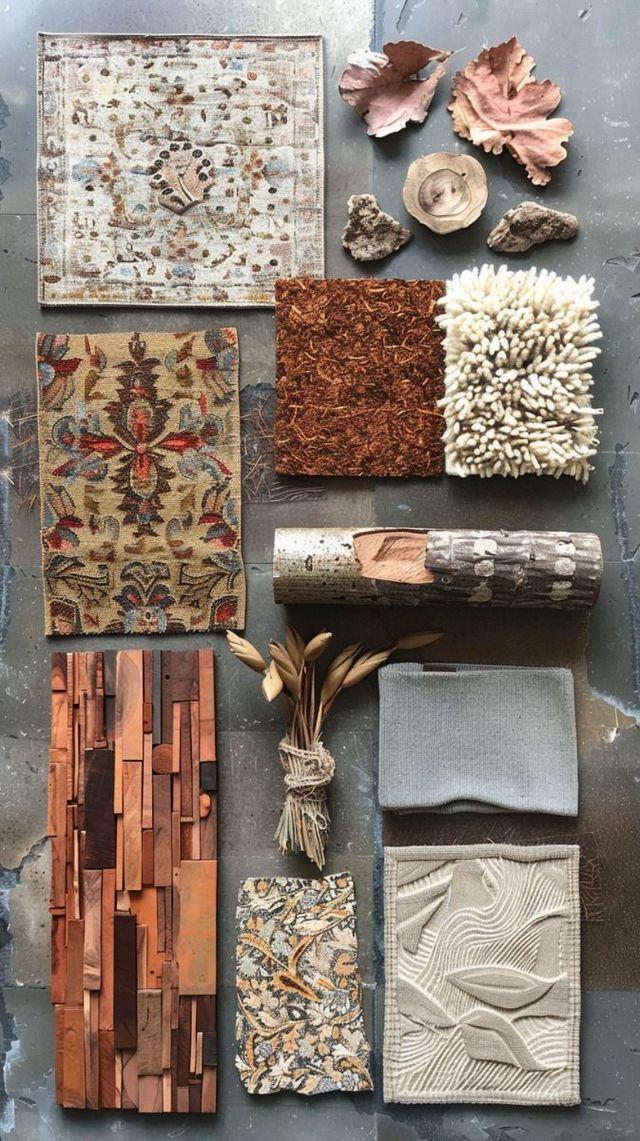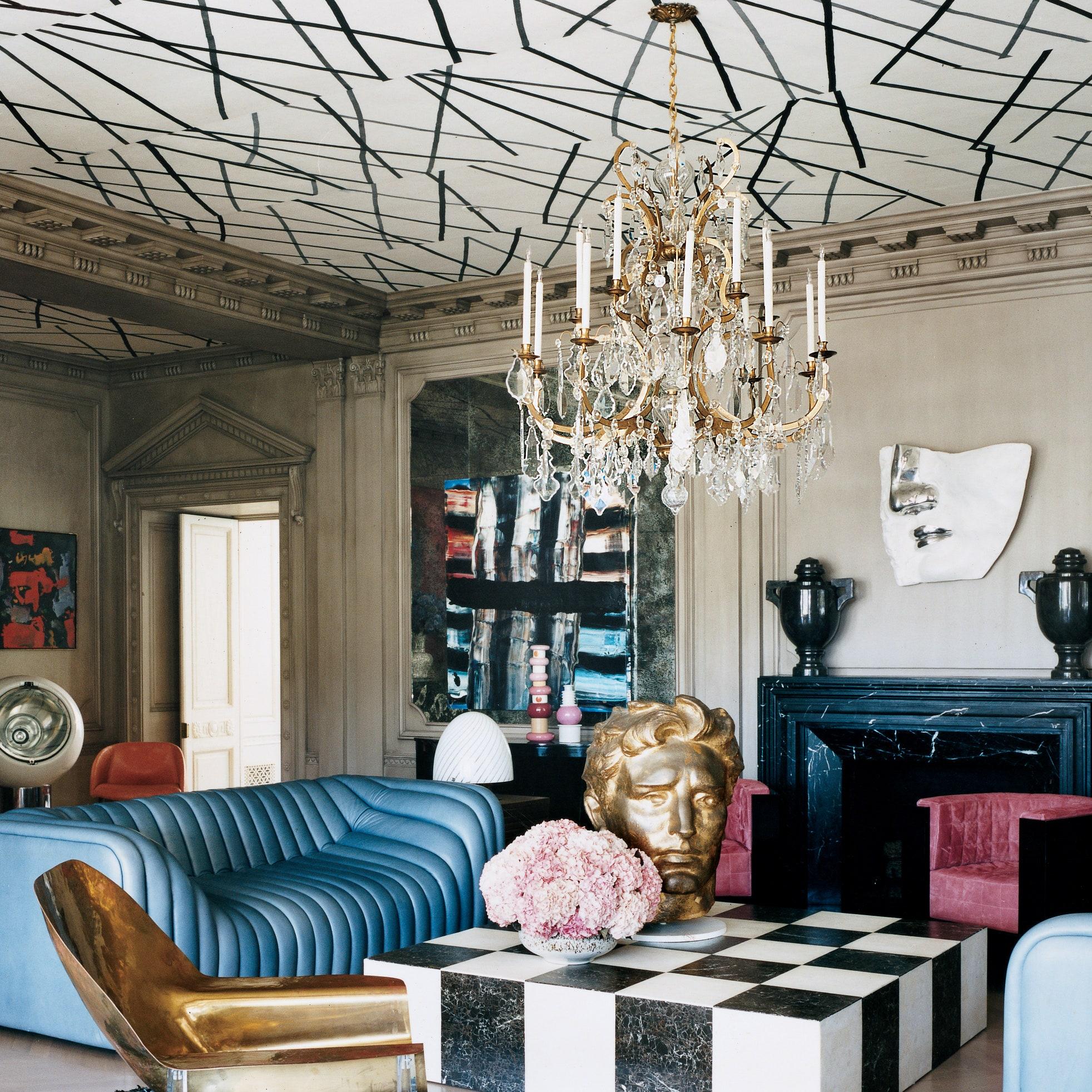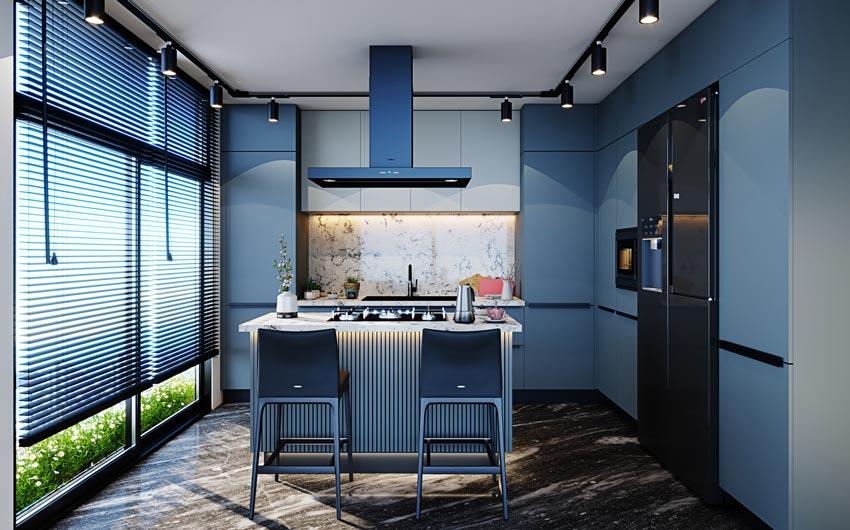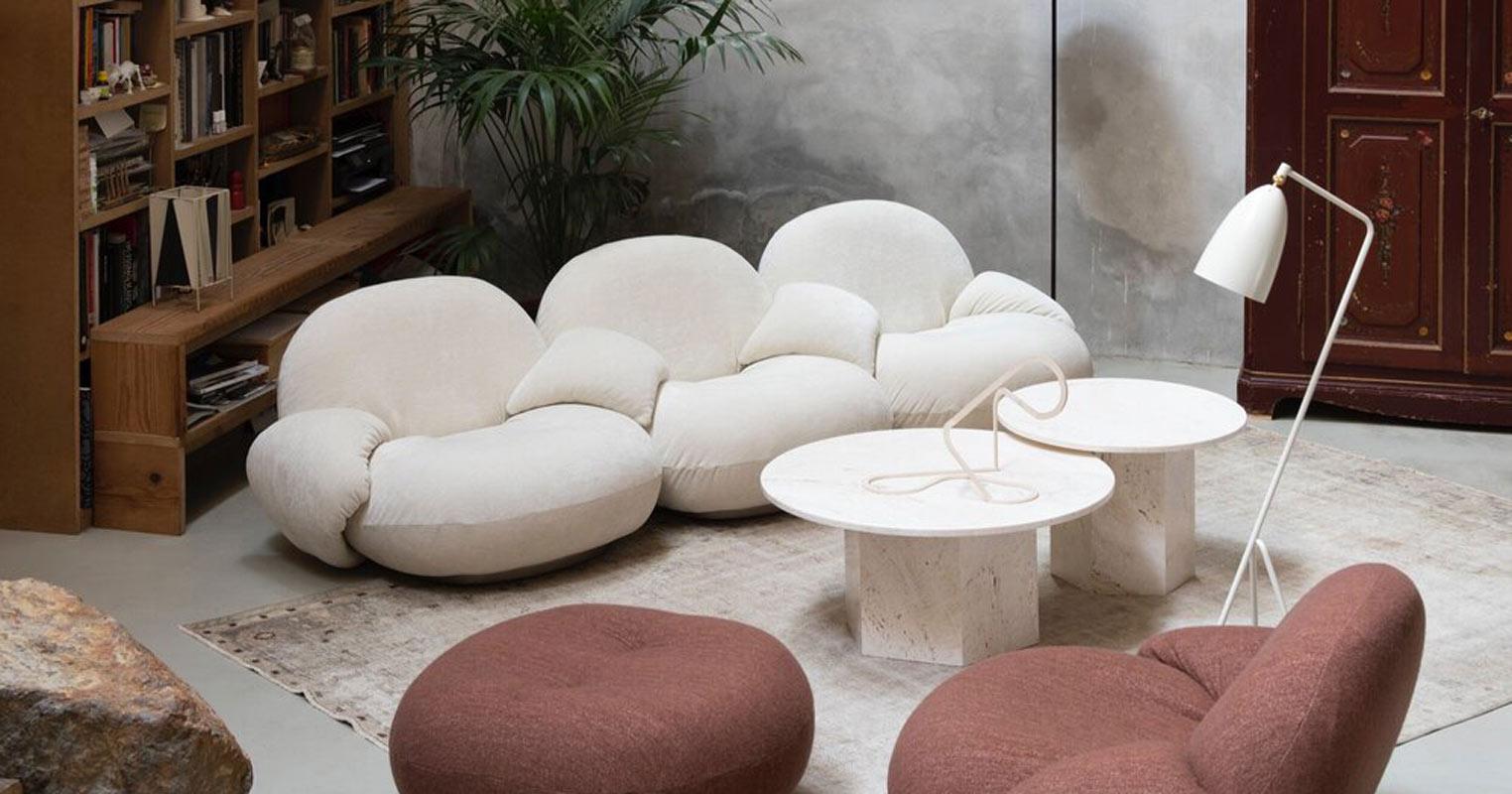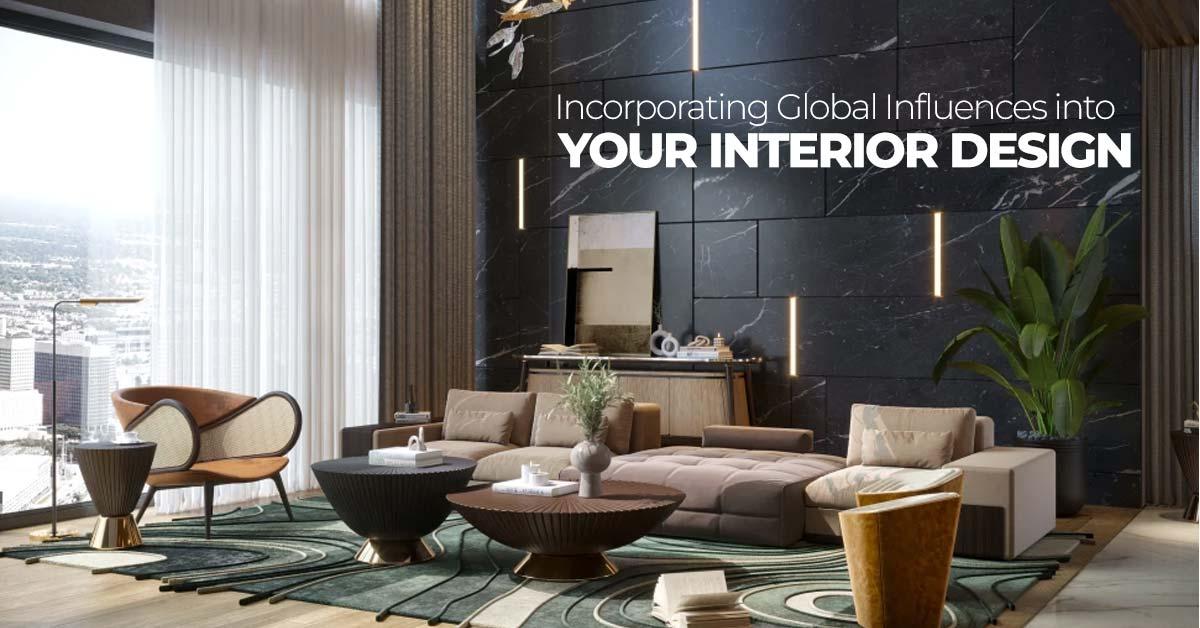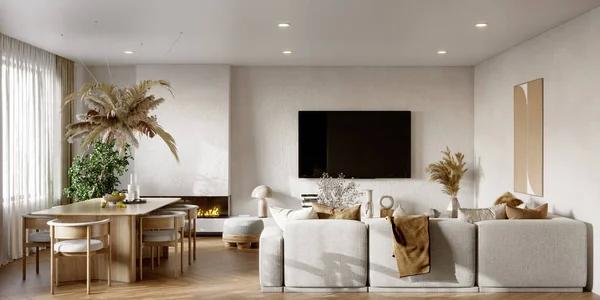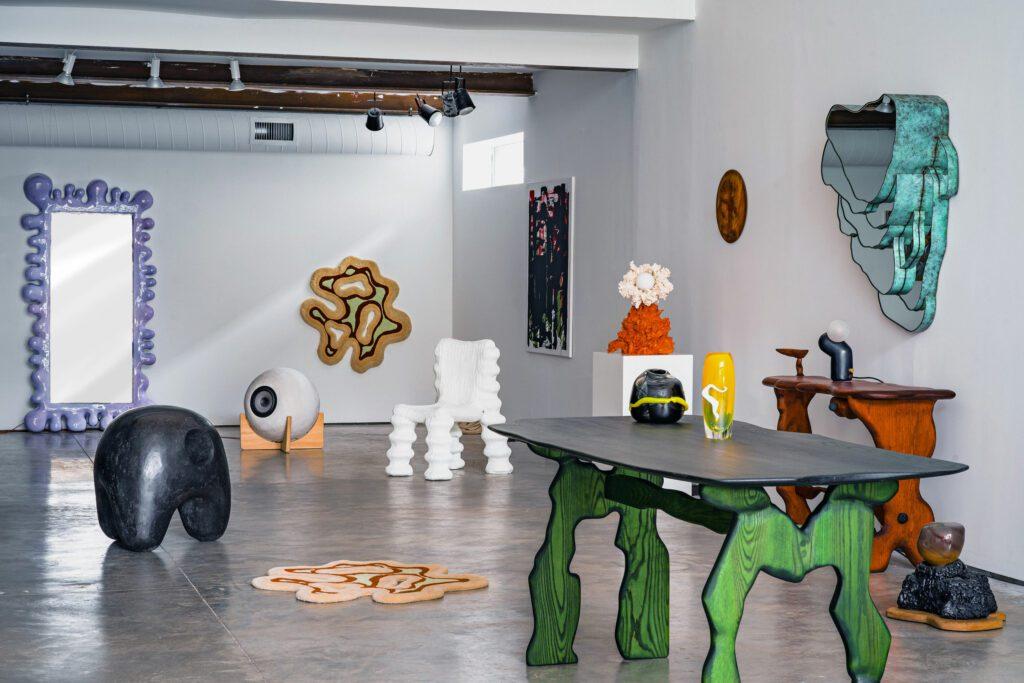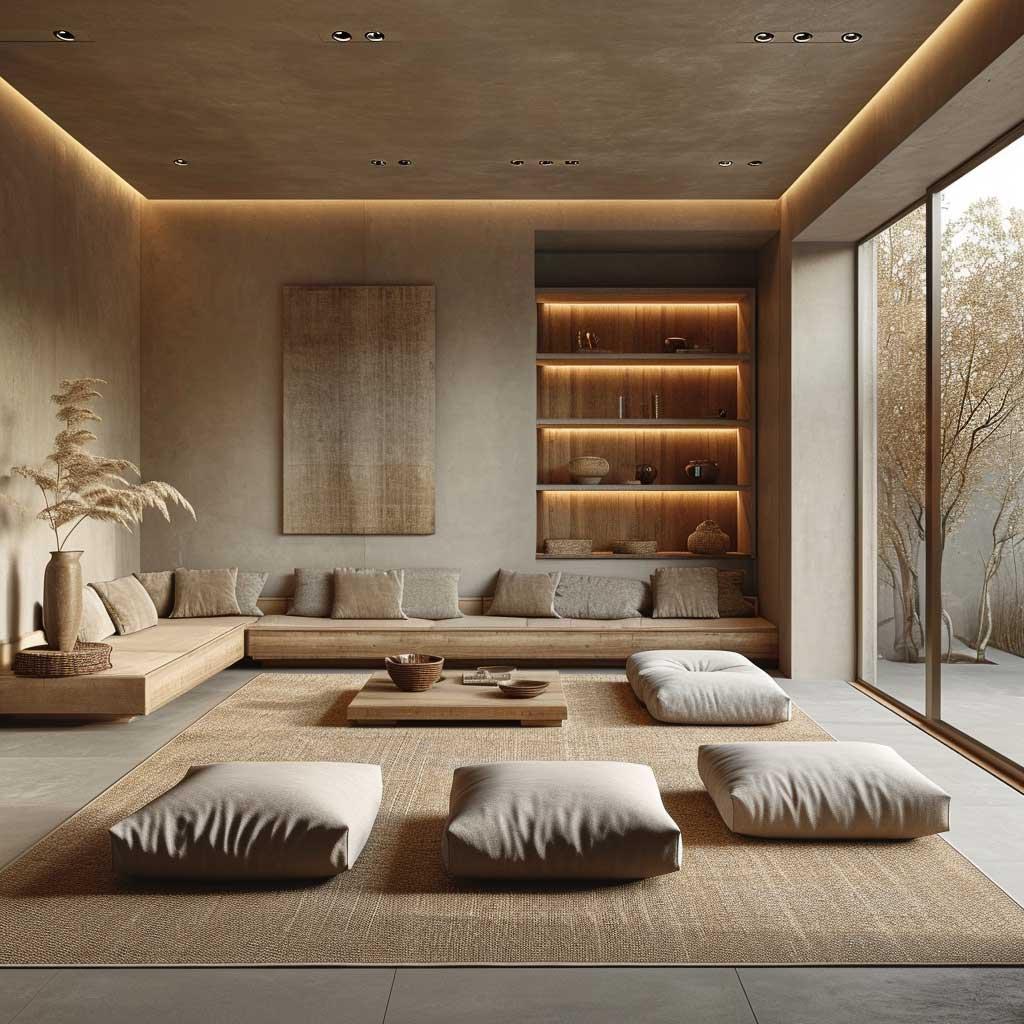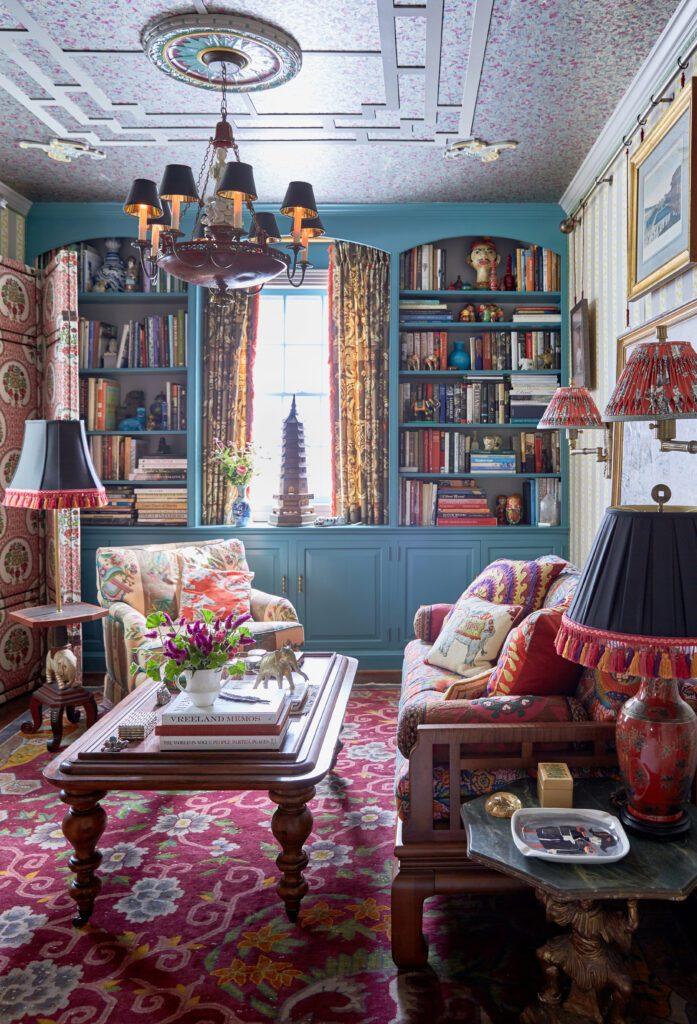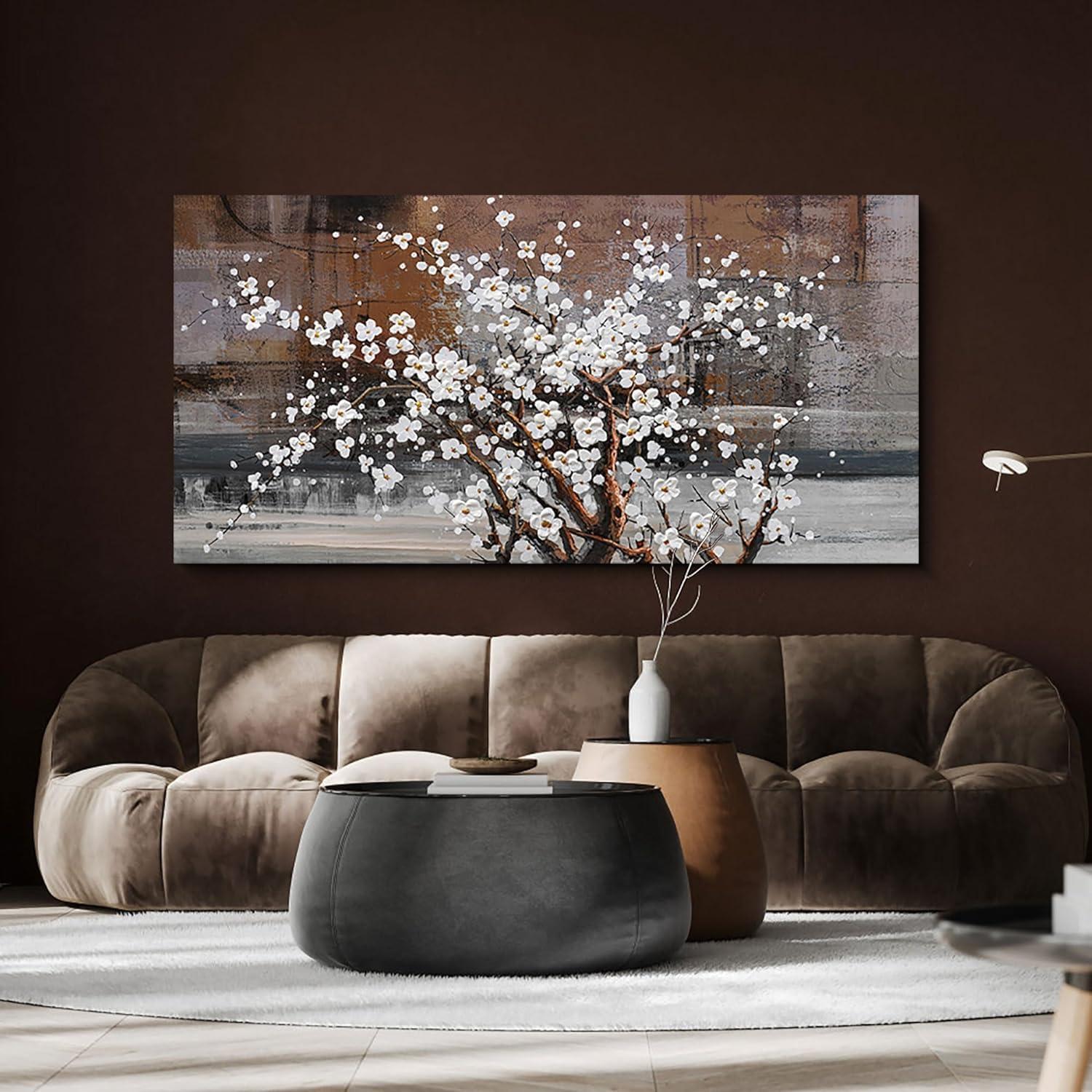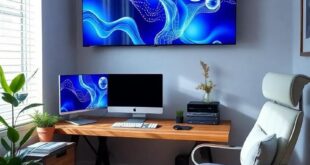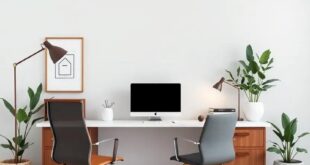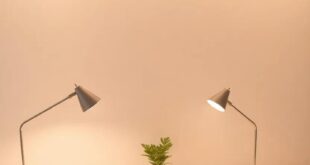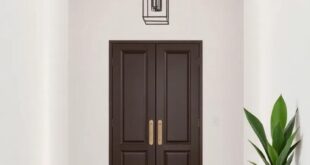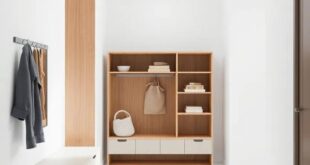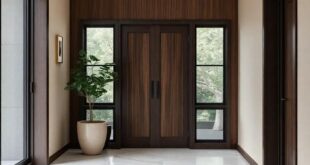Welcome to the vibrant world of interior design in 2024! As we step into a new year, the realm of home aesthetics is brimming with innovative ideas, refreshing concepts, and inspiring trends that promise to transform your space. Whether you’re a seasoned decorator or just embarking on your design journey, this listicle offers a curated collection of 24 inspiring interior design trends you can’t afford to miss.
Expect to explore a diverse array of styles, colors, and sustainable practices that reflect the contemporary ethos of creativity and functionality. From the resurgence of bold patterns to the soothing embrace of eco-friendly materials, each trend serves as a guide to help you reimagine your living space into a true sanctuary of self-expression. Get ready to gather insights, tips, and inspiration that will not only beautify your home but also make it a reflection of your unique personality! Let’s dive in and discover the trends that will define the art of living in 2024.
Biophilic design: Bring nature indoors with greenery in interior design
Integrating nature into your living space has emerged as a transformative trend that enhances well-being and creativity. With the increasing urbanization and time spent indoors, biophilic design seeks to reconnect us with the natural environment. Incorporating greenery into interior spaces can be achieved in various ways, such as:
- Indoor Plants: Choose low-maintenance options like snake plants, pothos, or peace lilies to bring life to your home.
- Green Walls: Create a stunning living wall by installing vertical gardens that act as natural air purifiers.
- Natural Materials: Use wood, stone, and organic fabrics to mirror the textures and colors found outdoors.
- Window Gardens: Maximize sunlight with potted herbs or succulents on sills to enjoy both aesthetics and functionality.
Furthermore, the strategic placement of natural light and outdoor views can significantly elevate ambiance. By emphasizing large windows or skylights, rooms become a canvas for sunlight, transforming any space into a haven of serenity. Consider these ideas to enhance your interiors:
- Open Layouts: Design fluid spaces that connect indoors with outdoors, blurring the lines of separation.
- Natural Color Palettes: Opt for earthy tones such as greens, browns, and blues that reflect natural landscapes.
- Aromatherapy: Incorporate elements like essential oil diffusers or scented candles infused with natural fragrances.
- Cascading Water Features: Add small indoor fountains to introduce soothing sounds reminiscent of nature.
For more inspiring ideas on incorporating nature into your home, visit biophilicdesign.com.
Sustainable materials: Eco-friendly options revolutionize modern interior design choices
The future of interior design is not just about aesthetics; it’s also about making choices that respect the planet. Designers are increasingly turning to sustainable materials that don’t compromise on style while contributing to environmental preservation. From reclaimed wood to bamboo, these eco-friendly options are making their mark. Natural fibers like hemp and jute offer sustainable textiles for upholstery and rugs, ensuring that your living space looks beautiful while reducing environmental impact. Additionally, recycled metal and glass can bring a touch of modernity, creating striking pieces that tell a story of upcycling old materials into something useful and inspiring.
Innovations in biodegradable materials and plant-based alternatives are also paving the way for a greener future in design. Think of using mycelium-based products for furniture or countertops made from agri-waste. These materials break down naturally at the end of their life cycle, providing a sustainable solution to waste management. Furthermore, organizations like Green Home Guide offer insights and resources on incorporating these materials into your home, ensuring you not only beautify your space but also support sustainable practices. By embracing these eco-friendly options, you can create interiors that reflect a commitment to both style and sustainability.
Maximalism resurgence: Bold patterns and colors dominate contemporary interior design trends
contemporary interior design trends”>
The resurgence of maximalism in interior design is a celebration of bold patterns and vibrant colors that transform spaces into visually striking masterpieces. Unlike the minimalist tendencies of previous years, maximalism invites a mix of textures, motifs, and hues, creating an environment that oozes personality. Homeowners are embracing clashing floral wallpapers, oversized art pieces, and exuberant textiles, all working in harmony to craft an immersive aesthetic. Common characteristics include:
- Layered Textiles: Combine velvet, silk, and linen in an eclectic mix for a rich sensory experience.
- Statement Furniture: Opt for large, dramatic pieces that become the focal points of the room.
- Eclectic Color Palettes: Bold reds, deep blues, and vivid yellows can be paired with softer tones for contrast.
- Artistic Accessories: Incorporate sculptures, vintage finds, and countless cushions that tell your unique story.
To bring a maximalist approach into contemporary interiors, think of ways to combine disparate styles and eras seamlessly. The result is a space that invites exploration and interaction, igniting conversations and inspiring creativity. This trend champions individuality and self-expression, allowing homeowners to curate personal sanctuaries filled with treasured objects and memories. Consider using a mix of modern art with vintage pieces or layering different styles of carpets to create depth. Here’s a quick reference for incorporating maximalism into your home:
| Element | Incorporation Tips |
|---|---|
| Color | Use unexpected combinations in a single room. |
| Textures | Layer rugs, curtains, and cushions for richness. |
| Art | Mix bold, oversized art with smaller pieces for contrast. |
For more inspiration on maximalist design, check out Dezeen for unique ideas that can help any space resonate with exuberance and charm.
Vintage revival: Timeless pieces inspire nostalgic interior design aesthetics
The resurgence of vintage aesthetics in interior design invites us to embrace the past while creating spaces that resonate with a sense of familiarity and warmth. Mid-century modern furniture, with its clean lines and organic shapes, remains a staple, effortlessly blending functionality with artistic flair. Art Deco elements, characterized by bold geometric patterns and luxurious materials, are making a comeback as well, offering a sophisticated touch that evokes glamour and elegance. To enhance these styles, vintage accessories such as retro lamps, statement mirrors, and classic area rugs can transform any room into a nostalgic haven.
Crafting a vintage-inspired interior isn’t merely about mimicking the past; it’s about curating pieces that tell a story. One can explore thrift stores, flea markets, and antique shops to find truly unique additions, such as vintage bar carts, ornate wooden furniture, or classic ceramics that spark conversations. Pair these timeless treasures with modern touches for a balanced look that feels fresh yet deeply connected to history. Embracing color palettes reminiscent of bygone eras—think pastel hues or earthy tones—will further enhance the nostalgic vibe. For more ideas and inspiration, visit Apartment Therapy.
Earthy tones: Warm, natural hues redefine cozy interior design atmospheres
As the world moves towards a desire for grounding aesthetic, earthy tones are making a significant comeback in interior design. These warm, natural hues blend effortlessly into living spaces, creating atmospheres that evoke a sense of comfort and connection to nature. Shades like terracotta, olive green, and warm taupe can transform a room into an inviting haven, soothing our senses and providing a refreshing antidote to the fast-paced digital age. Whether achieved through wall colors, furniture, or decor items, these tones work harmoniously together, allowing for versatile combinations that can suit any style, from rustic to modern.
Incorporating earthy tones into your home can be accomplished in various ways. Here are some effective tips to embrace this trend:
- Natural Materials: Use wood, stone, and woven textiles to accentuate the warmth of these colors.
- Layering Textures: Combine soft fabrics with rugged surfaces to create depth and interest.
- Strategic Lighting: Illumination can significantly enhance earthy tones; consider warm LEDs or natural daylight to bring out their richness.
- Accent Pieces: Add pops of subdued colors with cushions, rugs, or pottery to maintain a harmonious balance.
- Indoor Plants: Greenery not only complements earthy hues but also improves air quality and adds a lively touch.
Here’s a simple table showcasing some popular earthy tones and their perfect pairings:
| Earthy Tone | Best Pairing |
|---|---|
| Terracotta | Cream & Soft Gold |
| Olive Green | Beige & Light Gray |
| Warm Taupe | Dusty Rose & Navy Blue |
To explore more about how to incorporate these captivating hues into your space effectively, you can visit architecturaldigest.com.
Multifunctional spaces: Versatile designs optimize small interiors for modern lifestyles
Embracing flexibility is essential in contemporary interior design, especially as urban living spaces become smaller and more expensive. Multifunctional spaces are rapidly gaining popularity, thanks to their ability to cater to dynamic lifestyles while maximizing utility. Designers are reimagining traditional layouts by integrating thoughtful solutions like expandable furniture, hidden storage, and zones that serve multiple purposes. For instance, a living room can seamlessly transform into a home office with a compact desk that folds away, while a dining table can effortlessly extend to accommodate guests. Creating environments that adapt to various needs reflects not only style but also functionality.
Innovative materials and finishes play a critical role in enhancing these versatile designs. Options like modular shelving units, convertible sofas, and collapsible dining sets can help maintain a clean aesthetic while fostering creativity in spatial arrangements. Moreover, sustainable design elements are increasingly becoming a staple in multifunctional spaces, as they can replace bulky pieces with streamlined, eco-friendly designs. Incorporating techniques such as biophilic design—which integrates natural elements—further enriches small interior spaces, promotes mental well-being, and encourages a connection to the outdoors. To explore more on how to optimize small interiors with multifunctional designs, check out Architectural Digest.
Artisanal craftsmanship: Handmade items elevate unique interior design experiences
Embracing artisanal craftsmanship can transform any space into a unique sanctuary. Handmade items tell stories that mass-produced decor cannot compete with, infusing warmth and individuality into the interior. Consider integrating handcrafted pottery, woven textiles, and bespoke furniture pieces that showcase the skill of artisans. These elements allow homeowners to express their personal style while supporting sustainable practices and local economies. Unique handmade artwork can also serve as a striking focal point, making a distinct statement that resonates with the soul of the space.
Incorporating these distinct pieces encourages a connection between the interior and its inhabitants. A carefully curated collection of artisanal decor can harmoniously blend with various design styles—be it modern, rustic, or eclectic. Opt for items like custom wooden sculptures, hand-painted tiles, or locally sourced textiles that not only enhance aesthetic appeal but also foster a sense of authenticity. Each item contributes its own texture, color, and craftsmanship to the overall experience, ensuring that your home tells a cohesive and inspiring story. Explore more about enhancing your interior with artisan elements at Apartment Therapy.
Smart technology integration: Futuristic tech enhances convenience in interior design
As smart technology continues to evolve, its integration into interior design is reshaping how we interact with our living spaces. Imagine walking into a room where the lighting adjusts to your mood, and the temperature acclimates to your preferences—all seamlessly managed via voice commands or smartphone apps. This enhanced level of convenience not only elevates the ambiance but also maximizes energy efficiency throughout the home. Home automation systems allow for the harmonious orchestration of various devices, from automated blinds that adjust to natural light levels to smart speakers that curate the perfect playlist for any occasion.
Beyond mere convenience, futuristic tech is redefining aesthetics in home decor. Smart mirrors equipped with touch controls can display the weather, update your calendar, or even offer skincare advice, making them both functional and stylish. Color-changing LED strips integrated into cabinetry or shelving create a customizable atmosphere that can adapt to the time of day or a particular event. Additionally, 3D-printed furniture designed with integrated tech features, such as wireless charging surfaces, is not only a space-saver but also a conversation starter. With these advancements in smart technology, the lines between form, function, and minimalism are beautifully blurred, pushing the boundaries of contemporary design. Discover more about smart home trends at Houzz.
Layered textures: Mix fabrics for depth in interior design styles
Creating visual interest in your space can be achieved by mixing various textures and fabrics. Consider incorporating elements such as cotton, velvet, and leather to add depth and luxury to your rooms. Layering different textiles not only makes your environment feel cozier, but it also allows you to play with colors and patterns. Throw pillows, area rugs, and upholstered furniture can all serve as excellent touchpoints where different materials meet. For example, pairing a sleek leather sofa with a fuzzy wool throw and vibrant accent pillows creates a delightful contrast that invites interaction.
To further enhance layered textures, don’t shy away from using curtains, table runners, and cushion covers in various fabrics. A visually rich room can be achieved by combining soft linens with rougher materials like burlap or canvas. In bedrooms, opt for bedcovers that blend silky sheets with chunky knit blankets, or in living rooms, consider mixing a patterned fabric chair with a bouclé sofa to create an inviting atmosphere. Below is a quick reference table to guide you in choosing the right fabric pairings:
| Fabric Type | Suggested Pairings |
|---|---|
| Velvet | Cotton, Linen |
| Leather | Knitted Fabrics, Canvas |
| Linen | Wool, Silk |
| Wool | Jute, Denim |
Explore more ideas on fabric layering and interior design at Houzz.
Statement ceilings: Transform spaces with intricately designed interior ceilings
Elevate your interior design game in 2024 by focusing on the often-overlooked element of ceiling design. Statement ceilings can transform a mundane space into an artistic haven, offering depth and a sense of drama. From intricate plasterwork to bold colors and immersive textures, the options are endless. Explore designs that incorporate geometric patterns, metallic accents, and vibrant murals to accentuate any room. Homeowners are turning their gaze upward, using the ceiling as a canvas to express personal style and creativity.
Consider integrating various materials to create contrast and interest, such as wood beams for a warm, rustic feel or sleek, matte finishes for a modern touch. The trend of coffered or tray ceilings also provides an opportunity to play with height and shadow, making spaces feel larger and more inviting. Additionally, adding lighting elements, such as LED strips or stylish chandeliers, can highlight ceiling features, enhancing their visual impact even further. For more transformative ideas and to see stunning examples of statement ceilings, visit Architectural Digest.
Mood lighting: Adjustable lighting creates ambiance in interior design environments
As 2024 unfolds, the significance of adjustable lighting in creating the perfect ambiance within interior spaces becomes increasingly evident. The versatility of lighting allows for a transformation of mood with just a flip of a switch. Warm tones can infuse a space with a cozy feeling, making it ideal for intimate gatherings, while cool white lights enhance focus and sophistication, suited for contemporary designs. Homeowners are now embracing smart lighting solutions that provide customizable settings, enabling them to match illumination to various activities or times of the day. This adaptability allows for a seamless transition from a dynamic workspace during the day to a serene atmosphere filled with soft hues for evening relaxation.
Incorporating layered lighting solutions, such as sconces, floor lamps, and dimmable chandeliers, can create depth and visual interest. Here are a few popular techniques to consider:
- Accent Lighting: Highlight artwork or architectural features.
- Task Lighting: Provide efficient illumination for specific activities like reading or cooking.
- Ambient Lighting: Establish a general glow that fills the room.
| Type of Lighting | Best Uses |
|---|---|
| Recessed Lights | Hallways, Kitchens |
| Wall Sconces | Bedrooms, Living Rooms |
| Pendant Lights | Dining Areas, Bar Counters |
Investing in high-quality adjustable lighting not only enhances aesthetic appeal but also elevates functionality, responding effortlessly to the diverse needs of modern living. For further inspiration, consider exploring designs showcased on Architectural Digest.
Curved furniture: Soft lines redefine comfort in contemporary interior design
In 2024, the allure of curved furniture is sweeping through contemporary interior design, transforming spaces with its graceful and inviting aesthetics. Soft lines replace rigid, geometric forms, creating a sense of harmony and tranquility in the home. Designers are embracing pieces such as sofas, chairs, and tables that feature rounded edges and flowing silhouettes, inviting relaxation and comfort. The use of plush upholstery and vibrant fabrics enhances the visual appeal, making the furniture not just functional but also a focal point in any room.
Imagine a living room graced with a luxurious, curved sectional that cradles its occupants, or an elegant, round dining table that encourages intimate gatherings. These shapes bring an organic feel to modern design, breaking the mold of traditional furniture. Not only do these pieces evoke an emotional response, but they also optimize space and improve movement within the room. Curved furniture can easily complement various styles, from bohemian chic to minimalist. Explore the endless possibilities of soft forms and let them redefine your space with comfort and style. For inspiration and more ideas, check out Architectural Digest.
Global influences: Diverse cultural elements enrich eclectic interior design
In the ever-evolving world of interior design, a stunning trend is emerging that celebrates the rich tapestry of global cultures. By weaving together traditional textiles, artisanal craftsmanship, and vibrant color palettes, designers are crafting spaces that tell a story through their eclectic elements. Imagine a living room where bold Moroccan rugs coexist with minimalist Scandinavian furniture, or a dining area accented with hand-painted Mexican tiles. This fusion not only adds visual intrigue but also sparks conversations about the traditions and histories behind each piece.
To achieve this harmonious blend, here are some essential components to consider when incorporating diverse cultural influences into your interior spaces:
- Textiles: Incorporate a mix of cushions, throws, and curtains inspired by various cultures—think Indian block prints alongside Japanese kasuri fabrics.
- Artworks: Curate a collection of art pieces from around the world, showcasing local artists and their unique styles.
- Accessories: Use hand-crafted objects, from African masks to Turkish ceramics, to highlight the beauty of global craftsmanship.
- Color Schemes: Embrace bold palettes derived from different countries; for instance, the deep blues of Indonesian batik juxtaposed with warm earth tones from Italian terracotta.
Furthermore, the creation of a global-inspired design doesn’t need to be overwhelming. It’s about curating pieces that resonate with you and harmonizing them into a cohesive aesthetic. Consider creating a
| Region | Key Elements | Signature Colors |
| Middle East | Geometric patterns, ornate lanterns | Rich golds, deep reds |
| Asia | Minimalist designs, bamboo elements | Soft greens, subtle browns |
| Africa | Bright ceramics, woven baskets | Vibrant yellows, burnt oranges |
to visualize how diverse influences can seamlessly coexist in your home. To explore more about how cultural elements are shaping modern interiors, visit Architectural Digest.
Open concept layouts: Flowing spaces encourage connection in interior design
Open concept layouts are revolutionizing how we perceive and inhabit our living spaces, fostering a sense of unity and togetherness. The seamless transition between areas encourages interaction and connection among family members and guests, eliminating barriers typically imposed by traditional room divisions. With this approach, spaces are designed fluidly, allowing for multifunctional areas that can adapt to our ever-changing needs. Light, airy environments are paramount, as they enrich the experience of movement and communication. Consider incorporating features like large windows or glass doors to enhance the sense of openness while inviting natural light, which is celebrated for its psychological benefits.
To create an inviting open layout, consider design elements that emphasize togetherness and functionality. Here are some popular ideas to incorporate into your space:
- Integrated Living Zones: Connect dining, living, and kitchen areas to foster a communal atmosphere.
- Statement Furniture: Use oversized pieces that can define areas without breaking the sight lines.
- Versatile Room Dividers: Utilize movable screens or shelving units to provide flexibility while maintaining openness.
- Color Cohesion: Stick to a harmonious color palette for walls and furnishings to visually unify the space.
- Functional Accessories: Choose decor that serves a purpose, such as stylish storage solutions that enhance organization.
Here’s a quick overview of the benefits of open concept designs:
| Benefits | Description |
|---|---|
| Enhanced Communication | Facilitates easier conversations and interactions. |
| Light and Airflow | Promotes a brighter, more refreshing environment. |
| Flexibility | Allows for multifunctionality tailored to your lifestyle. |
| Spacious Feel | Gives the illusion of a larger area, reducing clutter. |
This design trend not only enhances aesthetics but also cultivates a more interconnected living experience, reflecting the modern desire for open communication and shared spaces. For more inspiration on open concepts and interior layouts, explore Houzz.
Neotenic design: Playful, youthful elements bring joy to interior design
Embracing the charm of immaturity, this trend in interior design zips past conventional aesthetics by incorporating lively and whimsical elements that evoke a sense of nostalgia and play. Think bright splashes of color, oversized furniture pieces, and quirky decor that mirror the innocence and joy of youth. Fluffy textiles, like velvety bean bags and whimsical rugs, encourage relaxation while invigorating the space with a sense of casual fun. Accents such as stylized animal motifs and oversized wall art serve not just as decoration but as conversation starters, inviting exploration and engagement.
The playful approach also extends to the use of innovative materials that add texture and interest. Imagine walls adorned with interactive art installations or furniture made from eco-friendly, unconventional materials. Incorporating elements such as brightly patterned wallpapers and creative lighting fixtures can transform a standard room into a joyful sanctuary. By blending functionality with an element of surprise, interiors not only become more inviting but also spark a childlike wonder in those who inhabit the spaces. For more unique design ideas, visit Architectural Digest.
Zen-inspired spaces: Minimalist designs promote serenity in interior design interiors
In 2024, interior design trends are embracing the serene elegance of Zen-inspired spaces, where less truly becomes more. These minimalist designs focus on creating environments that promote peace and tranquility through a thoughtfully curated selection of furnishings and decor. Key elements include natural materials like wood, stone, and bamboo, alongside neutral color palettes featuring whites, soft grays, and earth tones that serve to calm the senses. To enhance this tranquil atmosphere, large windows and open layouts invite light and nature indoors, allowing the outside world to merge seamlessly with your living space.
Functional simplicity is another hallmark of this aesthetic, encouraging a decluttered and intentional approach to home organization. Consider integrating multifunctional furniture pieces such as storage ottomans or sleek shelving units that maintain minimal visual noise while providing practicality. Accessories that evoke a sense of nature, like potted plants or water features, play a vital role in reinforcing the calming ambiance. For inspiration on creating your own Zen sanctuary at home, explore resources at Architectural Digest, where you can discover more about the power of minimalist design.
Color blocking: Bold contrasts create striking focal points in interior design
Color blocking is making waves in the realm of interior design, offering an exciting way to create dynamic and visually arresting environments. By employing bold contrasts, designers are able to turn ordinary spaces into extraordinary focal points. Think of a striking royal blue sofa against a vibrant mustard yellow wall. This combination not only captures attention but also establishes a rhythmic harmony within the room. Enhanced by geometric patterns and textiles, color blocking invites a playful yet sophisticated aesthetic that resonates with modern sensibilities.
To effectively implement this trend, consider strategically layering shades that complement yet challenge each other. Here are some popular combinations to inspire your creativity:
- Emerald Green & Terracotta
- Cobalt Blue & Coral
- Vibrant Pink & Deep Purple
- Soft Gray & Bright Orange
Incorporating these hues in furniture, wall paints, or accessory choices can redefine a room’s energy. For those looking to delve deeper into color theory and its application in interior design, visit colortrends.com for more inspiration and resources.
Indoor-outdoor living: Seamless transitions enhance spaces in modern interior design
The trend of blurring the boundaries between indoor and outdoor spaces continues to gain momentum in modern design. Homeowners are increasingly favoring layouts that encourage a smooth flow between the two environments, allowing natural light to flood interiors and enhancing overall well-being. Walls of glass, large sliding or folding doors, and strategically placed outdoor living areas create a seamless transition that invites nature into the home. Materials such as wood, natural stone, and metal are being used in both indoor and outdoor settings, establishing a cohesive aesthetic that connects the spaces harmoniously.
To enhance this integration, designers are focusing on color palettes and textures that reflect the surrounding landscape, making every part of the home a visual extension of the outdoors. Elements like covered patios, outdoor kitchens, and fire pits have become essential features that promote year-round enjoyment. Additionally, incorporating vertical gardens or living walls not only enhances air quality but also serves as a beautiful partition that maintains the sense of openness. For more ideas on maximizing indoor-outdoor living spaces, check out architecturaldigest.com.
Pattern play: Mixing prints adds excitement to interior design schemes
Embracing bold patterns and vibrant prints can undeniably enhance the aesthetic appeal of any space. When expertly combined, different patterns—think florals mixed with stripes or geometric shapes intertwined with abstract designs—create a visual harmony that captivates the eye. Layering prints in cushions, curtains, and wall art adds depth and personality, transforming an ordinary room into a lively sanctuary. The key lies in choosing a cohesive color palette, where complementary hues tie disparate prints together, ensuring the design feels intentional rather than chaotic.
Beyond textiles, consider incorporating patterned wallpaper or statement furniture to maximize the impact of mixed prints. The use of a variety of patterns can also introduce a sense of rhythm and movement, inviting both comfort and curiosity into your living spaces. To get started, mix large-scale prints with smaller ones, maintaining balance and contrast for an effective look. Explore resources for inspiration, such as Houzz, where you’ll find numerous examples of successful print pairings that breathe life into interior design.
Art as focal point: Captivating artworks redefine key elements in interior design
Art can transform a room in ways that basic décor cannot. When chosen thoughtfully, captivating artworks can serve as the perfect focal point, drawing attention and sparking conversation. Here are a few ways to utilize art to redefine your interior space:
- Oversized Statements: A large canvas or installation can dominate a wall, making it the centerpiece of the room. Think about pieces that evoke emotion or reflect the personality of the space.
- Gallery Walls: Curating a collection of smaller pieces can create a dynamic display, allowing you to showcase various styles, colors, and themes that connect with the room’s overall aesthetic.
- Framing Effects: The right frame can enhance the artwork, complementing it while creating an illusion of depth. Experiment with different materials and colors to achieve the desired effect.
Integrating art into your interior design not only adds beauty but also layers of meaning and history. Consider creating interactive spaces where guests can experience the art more intimately, establishing a personal connection. Here’s a simple table showcasing popular art styles and their characteristics:
| Art Style | Description | Ideal Spaces |
|---|---|---|
| Abstract | Non-representational art focusing on colors and forms. | Modern living areas or offices. |
| Vintage | Classic pieces that evoke nostalgia through style. | Cozy reading nooks or entryways. |
| Mixed Media | Combines different materials to create texture and depth. | Creative workspaces or galleries. |
For more inspiration and ideas on incorporating art into your spaces, check out Artsy, a platform dedicated to showcasing exceptional artworks from a variety of artists and styles.
Wrapping Up
As we wrap up our journey through the 24 inspiring interior design trends you can’t miss in 2024, we hope you feel invigorated and ready to transform your spaces with fresh ideas. Whether you’re drawn to the warmth of natural materials or the bold statements of color and shape, this year’s trends offer something for every aesthetic and lifestyle.
Interior design is not just about aesthetics; it’s about creating environments that reflect who you are and how you live. Embrace these trends as a starting point, and let your personal creativity lead the way. Remember, your home should be a canvas that tells your unique story.
So, gather your favorite inspirations, explore new concepts, and don’t hesitate to experiment. As you step into the new year, may your design decisions sparkle with originality and resonate with comfort. Here’s to creating beautiful spaces that inspire! Happy decorating!
 decorifusta Garden and patio decoration inspiration
decorifusta Garden and patio decoration inspiration

